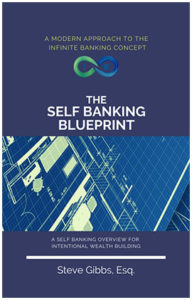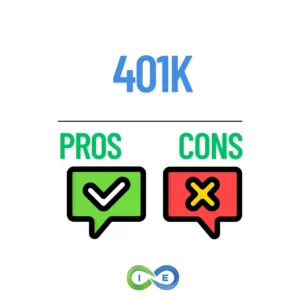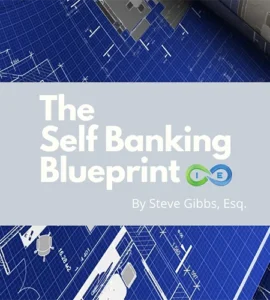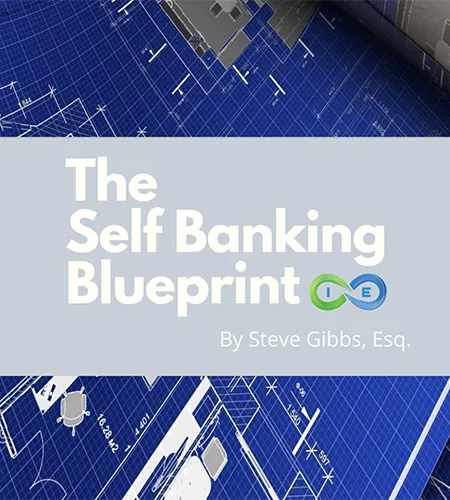Co-authored by: Steven Gibbs, JD, AEP, CEO & Co-Founder of Insurance and Estate Strategies LLC, and Jason Kenyon, Esq., CFO & Co-Owner. Both are licensed attorneys with 15+ years of experience in estate planning and strategic life insurance design.
📖 Estimated Reading Time: 16 minutes
Table of Contents
- Introduction: Two Paths to Financial Independence
- Understanding Infinite Banking
- Understanding Velocity Banking
- First Lien HELOC: The Advanced Velocity Banking Tool
- Key Differences: Infinite Banking vs Velocity Banking
- Risk Assessment for Each Strategy
- Real-World Case Studies
- How to Combine Both Strategies
- Who Should Use Which Strategy
- Implementation Guidelines
- Common Mistakes to Avoid
- Frequently Asked Questions
- Conclusion
Important Disclaimer
These strategies require financial discipline and intentional money management. If you struggle with budgeting, live paycheck to paycheck, or lack experience managing debt strategically, these approaches are not suitable for your current situation. Focus on basic financial stability first.
Introduction: Two Paths to Financial Independence
Both infinite banking and velocity banking promise to help you “become your own bank,” but they accomplish this goal through completely different mechanisms. While they share the word “banking” in their names, these strategies operate on distinct principles and serve different financial objectives.
Understanding the differences between these approaches is crucial because choosing the wrong strategy for your situation can cost you years of financial progress. More importantly, understanding how they can work together opens possibilities that neither strategy offers alone.
Key Insight
Infinite banking focuses on building a financial asset that grows over time, while velocity banking focuses on optimizing cash flow to eliminate debt faster. Both can be powerful, but they serve different purposes in a comprehensive financial strategy.
Understanding Infinite Banking
Infinite banking, popularized by Nelson Nash in his book “Becoming Your Own Banker,” uses specially designed dividend-paying whole life insurance policies as a personal banking system. The strategy goes beyond traditional life insurance by creating a financial tool that provides both protection and wealth-building capabilities.
How Infinite Banking Works
The infinite banking concept revolves around maximizing the cash value growth in a whole life insurance policy through specific design techniques:
- Policy Structure: Minimize the base premium and maximize paid-up additions to rapidly build cash value while avoiding Modified Endowment Contract (MEC) status
- Policy Loans: Access cash value through policy loans while the full cash value continues earning guaranteed interest and dividends (note: loan balance does not earn these returns)
- Dividend Reinvestment: Use annual dividends to purchase additional paid-up insurance, further increasing both cash value and death benefit
- Multiple Use of Money: Deploy the same dollar through policy loans for investments while it continues growing in the policy
Primary Benefits of Infinite Banking
| Benefit | Description |
|---|---|
| Tax-Advantaged Growth | Cash value grows tax-deferred; accessed tax-free through properly structured policy loans |
| Guaranteed Growth | Minimum guaranteed interest rate plus potential dividends |
| Death Benefit | Tax-free lump sum to beneficiaries |
| Policy Loans | Access to capital without credit checks or impact on credit score |
| Asset Protection | Protection from creditors in many states |
Strategy Requirement: Infinite banking requires consistent premium payments and long-term commitment (typically 7+ years to see optimal benefits). This approach works best for individuals with stable income who can maintain premiums through various economic cycles.
Understanding Velocity Banking
Velocity banking is a debt acceleration strategy that uses lines of credit—typically a Home Equity Line of Credit (HELOC) or Personal Line of Credit (PLOC)—to optimize cash flow and reduce the total interest paid on mortgages and other debts.
How Velocity Banking Works
The velocity banking process involves strategic cash flow management through a line of credit:
- Establish a Line of Credit: Open a HELOC or PLOC that serves as your primary financial account
- Income Deposits: Direct all income into the line of credit to immediately reduce the balance
- Expense Management: Use credit cards for monthly expenses to maintain cash in the line of credit longer
- Debt Chunking: Make large principal payments against target debts using available credit
- Cycle Repetition: Continue the process to accelerate debt payoff
The Mathematics Behind Velocity Banking
Velocity banking can be effective when the line of credit interest rate is competitive with existing debt, but the key advantage lies in interest calculation timing rather than rate alone:
Example Scenario
Sarah’s Situation: $300,000 mortgage at 5.5% vs. HELOC at 7.5%
Why Higher Rate Might Still Work:
- Mortgage charges amortized interest (front-loaded)
- HELOC charges simple interest on daily balance
- Strategic cash flow timing reduces average daily balance
- Large principal chunks eliminate years of compound interest
Note: This is a simplified example. Actual results vary based on individual cash flow, discipline, and market conditions.
Traditional Velocity Banking Challenges
- Discipline Requirements: Success depends on strict adherence to cash flow management
- Variable Interest Rates: HELOC rates can increase, affecting strategy effectiveness
- Manual Management: Requires ongoing attention to optimize results
- Limited Long-term Benefits: Primary benefit ends when debts are paid off
Critical Warning: Velocity banking can backfire spectacularly if not executed with precision. Without disciplined cash flow management, you may end up with more debt than you started with. Make sure you find a good coach before trying to implement.
First Lien HELOC: The Advanced Velocity Banking Tool
A first lien HELOC represents an evolution of traditional velocity banking that addresses many of the manual management challenges.
Key Features of First Lien HELOCs
- Primary Mortgage Replacement: Replaces your traditional mortgage entirely
- Expanded Equity Access: Typically up to 90% of home value available as credit line
- Automated Banking: Checking account directly linked to the line of credit
- Simple Interest Calculation: Interest charged only on outstanding daily balance
- Flexible Repayment: Pay interest-only or pay down principal as cash flow allows
- Draw Period Considerations: Most offer 10-year draw periods, then convert to amortizing payments
Automation Advantage
The first lien HELOC eliminates the manual “paycheck parking” discipline required in traditional velocity banking. Your checking account is automatically linked to the credit line, creating the velocity effect without requiring constant attention.
Key Differences: Infinite Banking vs Velocity Banking
While both strategies aim to optimize your relationship with money, they operate on fundamentally different principles and serve distinct purposes in wealth building.
| Aspect | Infinite Banking | Velocity Banking |
|---|---|---|
| Primary Objective | Build a growing financial asset | Accelerate debt elimination |
| Time Horizon | Lifetime strategy (20+ years) | Short to medium-term (5-10 years) |
| Risk Profile | Conservative with guarantees | Moderate risk, depends on discipline |
| Cash Flow Impact | Requires premium commitments | Uses existing cash flow more efficiently |
| Tax Benefits | Tax-deferred growth, tax-free access | Limited tax advantages |
| Asset Protection | Strong creditor protection | No additional protection |
| Legacy Benefits | Death benefit for heirs | No direct legacy component |
| Ongoing Benefits | Continuous growth and access | Benefits end when debts are paid |
Risk Assessment for Each Strategy
Infinite Banking Risks
- Long-term Commitment: Requires consistent premiums for decades to maximize benefits
- Opportunity Cost: Early years focus on building cash value rather than immediate liquidity
- Policy Design Matters: Incorrect policy structure can significantly reduce effectiveness
- Interest Rate Risk: Policy loan rates can adjust, affecting arbitrage opportunities
Velocity Banking Risks
- Discipline Failure: Poor execution can worsen your debt situation
- Variable Interest Rates: Rising rates can eliminate strategy effectiveness
- Cash Flow Disruption: Loss of income can create immediate crisis
- Limited Recovery: Mistakes are harder to correct than with infinite banking
Critical Success Factor
Both strategies require above-average financial discipline and understanding. If you frequently overdraw accounts, miss payments, or struggle with impulse spending, focus on basic financial management before considering either approach.
Real-World Case Studies
Case Study 1: Infinite Banking Implementation
Sarah’s Infinite Banking Strategy
Profile: 35-year-old professional, $120,000 annual income, stable employment
Implementation:
- Annual premium: $18,000 (15% of income) into properly designed whole life policy
- Policy structure: 90% paid-up additions, 10% base premium
- Projected Year 5 cash value: approximately $75,000*
- Estimated available for policy loans: approximately $67,500*
Projected Benefits:
- Tax-deferred growth with tax-free access through policy loans
- $500,000+ death benefit for family protection
- Ability to use cash value for investments while it continues growing
- Private financing system independent of banks and credit requirements
*This is a hypothetical illustration. Actual policy performance depends on company dividends, premium payments, policy design, and other factors. Individual results will vary significantly.
Case Study 2: Velocity Banking Implementation
Sarah’s Velocity Banking Strategy
Profile: Same Sarah, different approach focus
Debt Situation:
- Mortgage: $350,000 remaining at 5.5%
- Credit cards: $25,000 at 18% average
- Car loan: $30,000 at 8%
- Available home equity: $100,000
Strategy Implementation:
- HELOC: $75,000 credit line approved at 7.5%
- Used HELOC to eliminate all credit card debt immediately
- Redirected former credit card payments ($800/month) to accelerate car loan payoff
- Applied disciplined cash flow management to pay down HELOC balance
Results After 18 Months:
- Credit card debt: $0 (eliminated)
- Car loan: $0 (paid off early)
- HELOC balance: $15,000 (reduced from $25,000 peak)
- Monthly cash flow improvement: $800+ from eliminated payments
Critical Success Factors:
- Strict budget discipline and expense tracking
- Immediate deposit of all income to reduce HELOC balance
- Strategic use of credit cards with full payoff each month
- Commitment to not accumulating new consumer debt
This is a hypothetical example for illustration purposes. Actual results vary significantly based on interest rates, cash flow consistency, discipline level, and economic conditions. Strategy requires careful analysis and ongoing management.
How to Combine Both Strategies
The most sophisticated approach involves using both strategies in sequence or simultaneously, depending on your financial situation and goals.
Sequential Implementation Strategy
Phase 1: Debt Elimination (Velocity Banking)
- Use velocity banking principles to eliminate high-interest consumer debt
- Focus on credit cards, car loans, and other toxic debt first
- Consider accelerating mortgage payoff if rates and cash flow support it
- Timeline: 2-5 years depending on debt levels
Phase 2: Asset Building (Infinite Banking)
- Redirect cash flow from eliminated debt payments into life insurance premiums
- Begin building the infinite banking foundation
- Use policy loans for future major purchases instead of traditional financing
- Timeline: Lifetime strategy with benefits increasing over time
Phase 3: Strategic Integration
- Use policy loans to replace HELOC functions
- Leverage both home equity and policy cash value for investment opportunities
- Create multiple pools of accessible capital
- Optimize tax efficiency through strategic loan utilization
Simultaneous Implementation Strategy
Advanced practitioners might implement both strategies simultaneously, but this requires exceptional financial discipline and substantial cash flow:
- Start Infinite Banking: Begin with a modest whole life policy to establish the foundation
- Deploy Velocity Banking: Use HELOC or first lien HELOC for debt elimination
- Gradual Transition: As debts are eliminated, increase life insurance premiums
- Strategic Arbitrage: Use policy loans at favorable rates to pay down higher-interest debt
Advanced Strategy Warning: Simultaneous implementation is only appropriate for steady income individuals with exceptional financial discipline. Most people should focus on one strategy at a time for optimal results.
Creating Multiple Pools of Liquidity
The ultimate goal of combining these strategies is creating what experts call “strategic pools of liquidity”:
| Liquidity Pool | Access Method | Best Used For |
|---|---|---|
| Policy Cash Value | Policy loans | Long-term investments, major purchases |
| Home Equity | HELOC or first lien HELOC | Real estate investment, business opportunities |
| Emergency Reserves | Combination of both | Unexpected expenses, opportunity funding |
Who Should Use Which Strategy
Ideal Candidates for Infinite Banking
You should consider infinite banking if you:
- Have stable, consistent income and can commit to long-term premium payments
- Are focused on wealth building rather than just debt elimination
- Want tax-advantaged growth and access to capital
- Need life insurance protection for family or business purposes
- Seek asset protection from potential creditors
- Plan for retirement and want tax-free income options
- Are interested in leaving a legacy through the death benefit
Ideal Candidates for Velocity Banking
You should consider velocity banking if you:
- Have significant high-interest debt (credit cards, personal loans)
- Own a home with available equity and can qualify for favorable HELOC terms
- Have strong cash flow management skills and financial discipline
- Are motivated by debt elimination rather than long-term asset building
- Want to see immediate progress on debt reduction goals
- Can maintain consistent positive cash flow even with variable interest rates
- Are comfortable using debt strategically rather than avoiding it entirely
Who Should Avoid These Strategies
These strategies are NOT suitable if you:
- Live paycheck to paycheck without consistent surplus income
- Have poor financial discipline or frequently overdraw accounts
- Are uncomfortable with strategic use of debt or leverage
- Lack stable employment or have highly irregular income
- Are nearing retirement age (55+) without substantial existing assets
- Have not demonstrated ability to consistently save and budget
- Are seeking immediate results rather than long-term financial planning
- Have existing financial stress or unmanaged debt problems
Implementation Guidelines
Starting with Infinite Banking
If infinite banking aligns with your financial goals, here’s the strategic implementation process:
- Evaluate Current Financial Position: Ensure stable income and eliminate high-interest consumer debt first
- Determine Premium Capacity: Calculate sustainable premium levels (typically 10-25% of income)
- Policy Design Consultation: Work with specialists who understand proper policy structure for infinite banking
- Company Selection: Choose mutual insurance companies with strong dividend-paying history
- Implementation: Consider starting with convertible term insurance to lock in insurability
- Education: Invest time in understanding policy mechanics and optimization strategies
Pro Tip: Convertible Term Bridge Strategy
Consider starting with a large convertible term policy for your full human life value, then convert portions to whole life as cash flow allows. This protects your insurability while providing flexibility in implementation timing.
Starting with Velocity Banking
If velocity banking fits your situation, follow this careful implementation approach:
- Assess Cash Flow: Ensure you have consistent positive cash flow and emergency reserves
- Secure Credit Line: Shop for the most favorable HELOC or PLOC terms available
- Create Detailed Budget: Map out exact cash flow timing for optimal strategy execution
- Start Small: Test the strategy with a portion of available credit before full implementation
- Monitor Closely: Track results monthly and adjust as needed
- Plan Exit Strategy: Know what you’ll do with cash flow once debts are eliminated
Advanced Implementation: Volume-Based Banking Integration
For sophisticated practitioners, these strategies can integrate with broader Volume-Based Banking principles that maximize the efficiency of all money flowing through your financial system. This approach, which we call The Ultimate Asset strategy, combines the best elements of both infinite banking and velocity banking within a comprehensive financial framework.
Common Mistakes to Avoid
Infinite Banking Mistakes
- Wrong Policy Design: Using traditional whole life instead of properly structured infinite banking policies
- Insufficient Premium: Underfunding policies and limiting cash value growth potential
- Impatience: Expecting immediate results from a long-term wealth building strategy
- Poor Loan Management: Not understanding policy loan mechanics and repayment optimization
- Company Selection Errors: Choosing companies based on rate quotes rather than long-term stability
Velocity Banking Mistakes
- Inadequate Discipline: Failing to maintain strict cash flow management requirements
- Over-leveraging: Using too much available credit and creating unsustainable payments
- Ignoring Rate Changes: Not adjusting strategy when interest rates move unfavorably
- No Emergency Buffer: Operating without adequate reserves for income disruptions
- Unrealistic Expectations: Expecting strategy to work regardless of personal financial behavior
Frequently Asked Questions
Can I use both strategies simultaneously?
Yes, but it requires exceptional financial discipline and substantial cash flow. Most people achieve better results focusing on one strategy first, then adding the second once the first is well-established.
Which strategy provides better returns?
This depends on your definition of “returns.” Velocity banking focuses on interest savings and debt elimination. Infinite banking focuses on long-term wealth accumulation and tax advantages. They serve different financial objectives.
How much money do I need to start either strategy?
Infinite banking typically requires annual premiums starting around $10,000+ to be effective, though this varies based on age, health, and policy design. Velocity banking requires existing home equity or qualification for a personal line of credit (usually $25,000+ minimum) plus consistent positive cash flow to service the debt.
Are there age limitations for these strategies?
Infinite banking works best when started younger due to longer time horizon and lower insurance costs. Velocity banking can work at any age but requires stable income and debt capacity.
What happens if interest rates change significantly?
Infinite banking policies typically have guaranteed minimum interest rates (often 4-6%) plus potential dividends, providing some protection against rate changes. However, policy loan rates may adjust with general interest rate movements. Velocity banking can be significantly impacted by rising rates since HELOCs typically have variable rates tied to prime. A rate increase from 7% to 10% on a $50,000 HELOC adds $1,500 annually in interest costs.
Can these strategies help with taxes?
Infinite banking provides significant tax advantages through tax-deferred growth and tax-free policy loans. Velocity banking provides limited tax benefits, though mortgage interest may be deductible.
How do I know if I have enough discipline for these strategies?
If you consistently live within your means, save regularly, and have never defaulted on debt obligations, you likely have sufficient discipline. If you struggle with any of these areas, focus on basic financial management first.
What’s the biggest risk with each strategy?
For infinite banking: long-term premium commitment and opportunity cost in early years. For velocity banking: potential to worsen debt situation if not executed properly.
Conclusion
Both infinite banking and velocity banking represent sophisticated alternatives to conventional financial advice, but they serve fundamentally different purposes and require different skill sets to implement successfully.
Infinite banking excels as a long-term wealth building strategy that provides tax advantages, guaranteed growth, asset protection, and estate planning benefits. It works best for individuals with stable income who can commit to consistent premium payments and want to build a lasting financial legacy.
Velocity banking shines as a debt acceleration strategy that can dramatically reduce the time and interest cost of debt elimination. It works best for disciplined individuals with substantial debt who can maintain strict cash flow management and want to see rapid progress toward debt freedom.
The most powerful approach may be using both strategies in sequence—eliminating debt through velocity banking principles, then redirecting that cash flow into infinite banking for long-term wealth accumulation. This combination creates multiple pools of liquidity and provides both short-term debt relief and long-term financial security.
Key Takeaway
Success with either strategy requires above-average financial discipline and a clear understanding of the mechanics involved. These are not “set it and forget it” approaches—they demand ongoing attention and strategic decision-making.
The choice between infinite banking and velocity banking—or the decision to use both—should be based on your specific financial situation, goals, risk tolerance, and commitment level. There is no universal “best” choice, only the best choice for your unique circumstances.
Ready to Explore These Advanced Banking Strategies?
Understanding infinite banking and velocity banking is just the first step. Implementing them correctly for your unique financial situation requires personalized analysis and expert guidance.
Schedule Your Complimentary Strategy Session Today
Our specialists can help you:
- Evaluate which strategy fits your financial profile and long-term goals
- Design properly structured policies that maximize infinite banking potential
- Analyze your debt situation to determine if velocity banking could accelerate your debt freedom
- Create an integrated approach combining both strategies for optimal results
- Avoid costly implementation mistakes that can derail your success
- Build a comprehensive financial strategy that goes beyond conventional advice
This complimentary consultation will provide clarity on whether these advanced strategies are appropriate for your situation and how to implement them effectively if they are.
Schedule Your Free Strategy Session
Discover how these powerful banking concepts can transform your financial future





